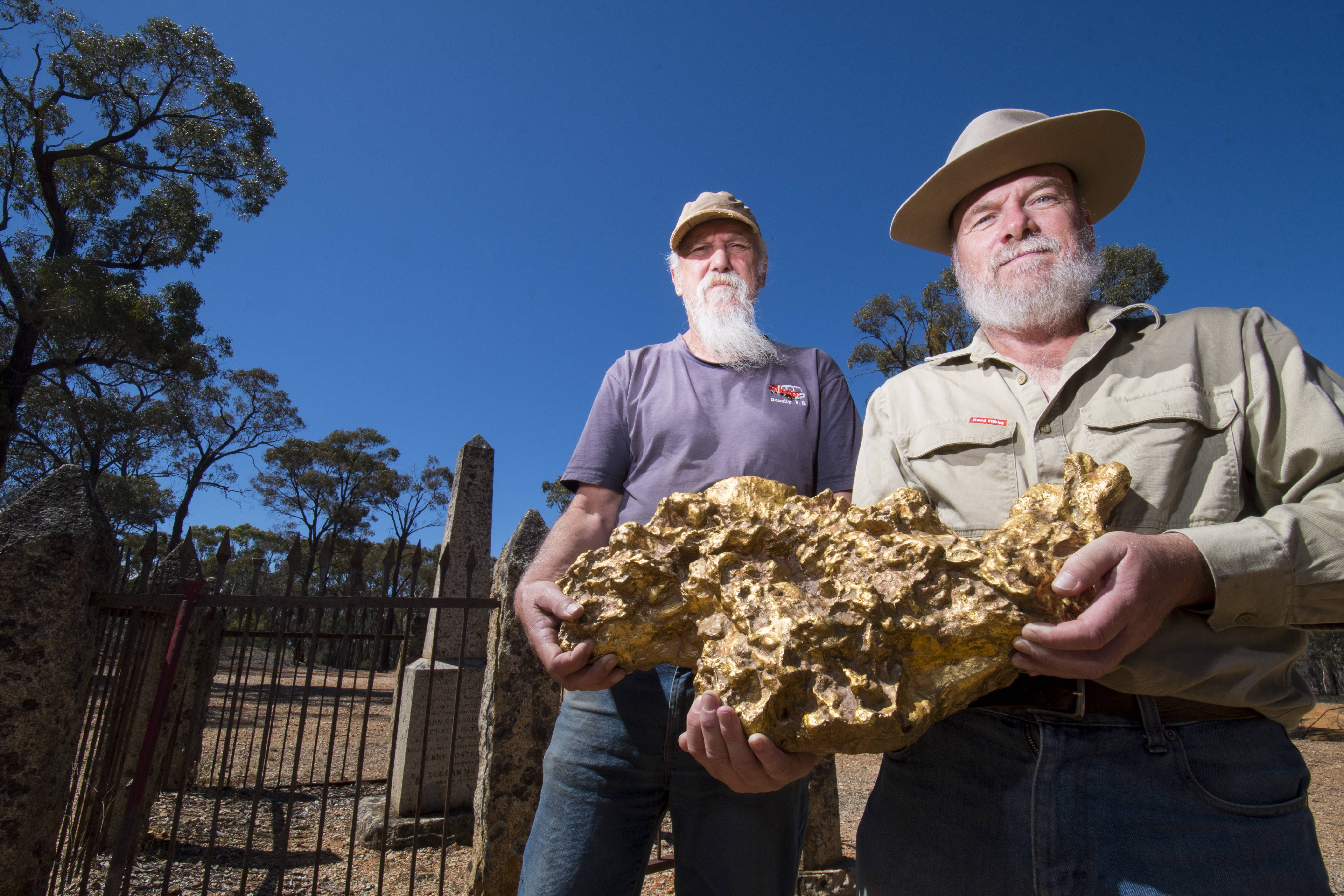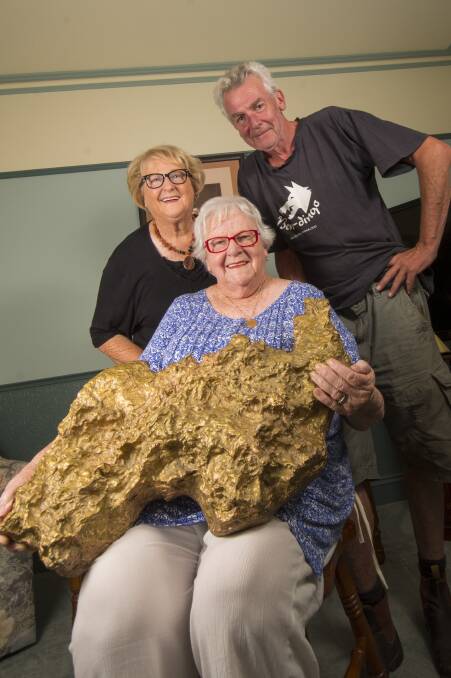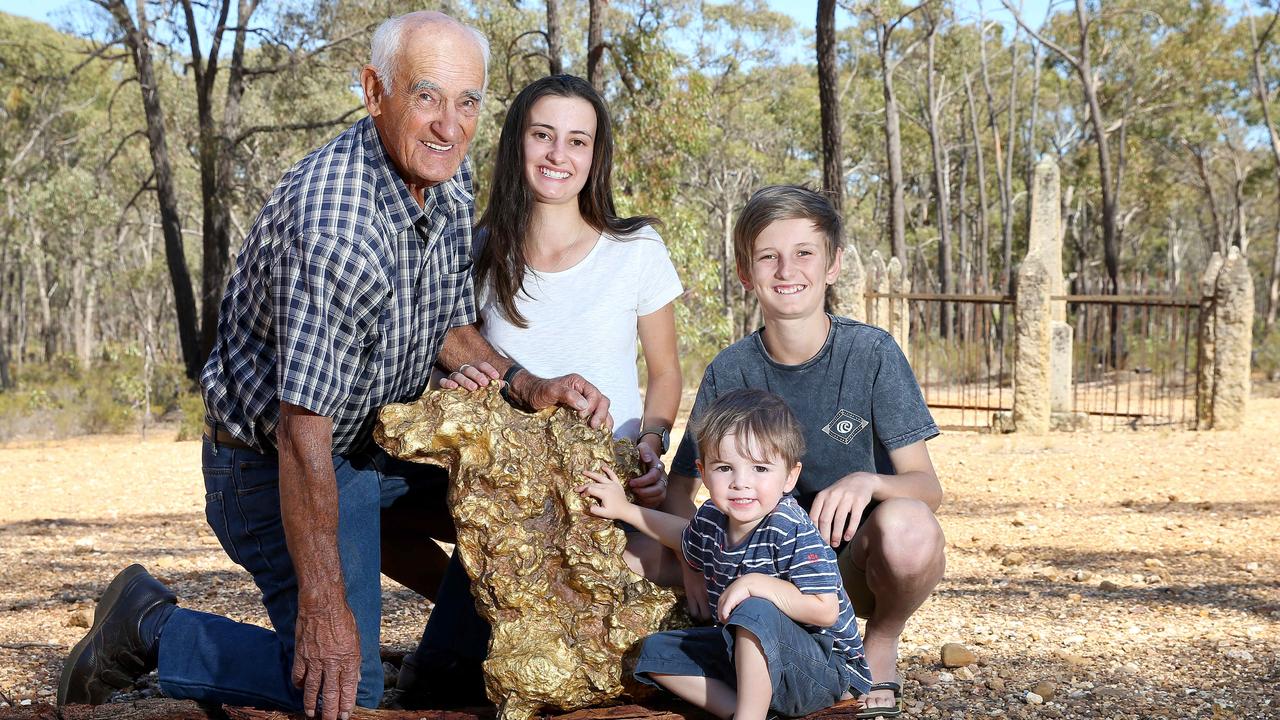
Catherine Deason was at home in her hut at Moliagul when her husband John returned and said he had something to show her.
Knowing well her husband’s habit of bringing people back to the house for a meal, she said, “I hope it’s not another unwelcome stranger”.
“No – it’s a welcome stranger,” John replied.
So goes one of the stories surrounding the discovery of the world’s largest alluvial gold nugget, the Welcome Stranger, 150 years ago.
Tuesday, February 5 marks the sesquicentenary of the momentous event, which left two Cornish prospectors very well-off and attracted attention worldwide.
John Tully, president of the Goldfields Historical and Arts Society at Dunolly, said the discovery remained meaningful today.
“It’s significant. It’s the largest nugget ever found in the world… There’s not too much of anything that can keep a record for 150 years,” Mr Tully said.
Related: Prospector unearths $250,000 gold nugget
Dunolly Museum has an account of Friday, February 5, 1869, written by John Deason himself in 1905.
Deason said he was working the surface at the Moliagul claim with a pick that morning when he struck what he thought was a stone.
“I scraped the ground with the pick and saw gold; then I cleared away further and right round the nugget,” he wrote.
It was “not more than an inch below the surface”.

After prying the nugget out with a crowbar, Deason wrote, he and Richard Oates carted the nugget down to his hut, put it on the fire for 10 hours, then broke the quartz off it.
Mr Tully said Deason and Oates’ initial plan was to take the nugget to Melbourne, but with word getting out quickly, they feared being robbed on the way, so instead took it to the bank at Dunolly.
The nugget was too big for the scales, so it had to be broken up into pieces to be weighed, before it was melted down into ingots.
Related: Kerang man digs up $135,000 nugget
A report in the Illustrated Australian News for Home Readers, published February 22, 1869, said the bank was crowded with spectators and a constable was sent for “to guard the prize”.
“The appearance of the “Welcome Stranger” in its pristine state was something wonderful, and it seemed impossible to realise the fact that so great a mass of gold could be collected in one lump,” the publication reported.
The Ballarat Star described Welcome Stranger as a “monster nugget”.
Unfortunately, there were no photographs taken of the nugget, only sketches.
Deason, his wife, Oates, and other miners and their wives staged a photo a few days later, using a rock or quartz in place of the nugget.
According to Mr Deason’s account, the bank paid £9563 pounds for the nugget – or a price Mr Tully said was the equivalent of an average working man’s wages for 43 years.
A 4.1-kilogram nugget discovered in the Golden Triangle in 2016 was valued at more than $250,000.
Newspapers of the time reported the men were “hard up” and had been refused credit for a bag of flour a week or so before finding the nugget, and only a day earlier had been reminded of a debt they owed a tradesman.
But despite these stories of the prospectors doing it tough, Mr Tully said this was not necessarily the case.
“They had a reasonably rich claim, and they were doing alright,” he said.

The aforementioned story of Deason breaking the news to his wife Catherine was one account of how Welcome Stranger came to be named (as relayed by their great-granddaughter Denise Deason, who wrote a book on the discovery), but Mr Tully said the exact origins of the name were not known.
His take was that the nugget was so named because the term ‘welcome stranger’ was in use at that time, and was used in the sense of an unexpected fortune.
Like many significant events that have captured the public imagination, there are also varying accounts of how the nugget came to be discovered.
David Mulqueen, Deason’s great-great-grandson, said Denise Deason’s version of events reported that the nugget was found after John Deason took his son out in the cart to see an eagle.
The axle broke when the cart ran into something and when Deason got out to inspect it, he saw gold on the wheel.
He went back and saw the nugget, had his son fetch Oates, and the three of them dug it up together.
Related: Miners with a heart for gold
Mr Mulqueen, his mother Ruth and her sister Jill Caldwell are among the descendants of the Deasons who will attend a 150th anniversary celebration at Moliagul this Tuesday (they also attended the 100th anniversary in the 1960s).
The life of their ancestor was not always a happy one.
Mr Mulqueen said Deason was working in the tin mines in Cornwall at the age of 15.
He eventually left Cornwall and came to Bendigo with his wife and three children, Mr Mulqueen said, but within 18 months or so of arriving, his children and wife had died.
It was reported he later met his second wife Catherine at the Shamrock Hotel.
Denise Deason, Mr Mulqueen said, reported Deason met a one-legged man who told him Bulldog Gully would spark the next gold rush.
Those words stuck: he and Catherine moved to Moliagul, and 10 years later, Welcome Stranger was found.
When asked about the legacy Welcome Stranger has left with the family, Mr Mulqueen laughs that Deason certainly didn’t leave any of his fortune to his great-great-grandson.
Mrs Mulqueen thinks of the “enormous” impact of the discovery; the many people it attracted to the region.
“It’s a funny pride we all share,” Mr Mulqueen said.
John and Catherine Deason remained in the area and the home they lived in after the discover, The Springs, still stands.
The couple were buried in Moliagul cemetery after their deaths at the age of 85 in 1915 and 1921, respectively.
Richard Oates returned to Cornwall after the big find, married his childhood sweetheart and brought her back to Moliagul.
He died at the age of 79 in 1906 and was buried at Marong.
The 150th anniversary celebration is free to attend and will include a guided walking tour, a talk on some of the lesser-known facts about Welcome Stranger, and a recreation of the main photo on this page. It begins at 10am at the Welcome Stranger monument at Moliagul. Attendees are advised to bring food, as none will be available at the site.
Dunolly Museum has a Welcome Stranger exhibition running from February 2 to 17, which includes the scales used to weigh the nugget. The museum will be open from Wednesday to Saturday during this time.
Have you signed up to the Bendigo Advertiser’s daily newsletter and breaking news emails? You can register below and make sure you are up to date with everything that’s happening in central Victoria.

